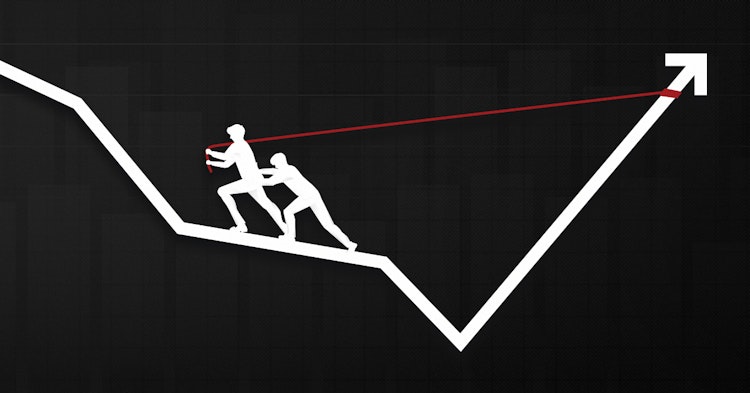Why St Kilda Are At The AFL's Crossroads
Last updated: Nov 16, 2021, 2:38AM | Published: Nov 16, 2021, 12:14AM
If you’re a confused St Kilda fan, it’s unlikely you’re alone.
2020’s breakout season promised so much, with tantalising suggestions that glory was close.
Under the tutelage of Brett Ratten in his first full season in charge, the Saints jumped from 14th in 2019 to a semi-final appearance all the while sporting the league’s fourth-highest scoring attack.
To the club’s credit, offensive efficiency was a definite focus and the club’s style of play backed it up.
St Kilda was one of the most accurate teams in front of goal and had the 3rd best goal-to-inside 50 ratio in the league. They were an intoxicating, fast-moving team that ranked 5th from a kick-to-handball ratio point of view and 3rd for running bounces. This drive resulted in deep inside-50 penetration securing the 5th most amount of marks once in the arc and thus setting up more efficient scoring chances. Their tenacity at ground level placed them 2nd for tackles inside 50.
This was a high-octane and energetic unit that produced consistently entertaining footy and which was rewarded with solid results.
However in hindsight, perhaps 2020 was nothing more than a mirage.
RELATED: Which AFL Coaches Are Under The Most Pressure Heading Into 2022?
Shorter games, crammed fixtures and conditions that allowed clubs and players to get away with a level of inefficiency not usually deemed acceptable in better weather benefitted a number of teams, none more than the Saints.
Being a high-scoring team shouldn’t have been a surprise under Ratten, who had Carlton playing a similarly impressive and entertaining style of footy during his time in charge at Princes Park.
He enjoyed moderate success at the club he played for, taking the Blues from the doldrums of the AFL ladder into a more comfortable, mid-table spot.
Finals appearances were offset by demolitions, and the notoriously impatient Carlton board, likely overestimating their quality at the time, decided to sack Ratten and replace him with Mick Malthouse in late 2012.
Over his 120 games in charge, the Blues sat comfortably in the top eight for points scored, but were mediocre defensively save for an aberrational 2011 where they had the 5th-best defence.
With experience at the innovative and entertaining Hawks as an assistant perhaps we shouldn’t have been surprised by St Kilda’s immediate change of fortune under Ratten.
Equally, it’s perhaps why Saint’s fans have the right to be mightily confused at this point in time.
RELATED: Stats That Matter- All Hail The Intercept Possession
2021 felt like a tale of two halves and while the team finished just one game outside the top eight, frustration at their performance wasn’t only in the eye of the supporter.
In the first half of the season the Saints lost to Essendon by 75 points, Port by 54, the Dogs by 111 while they even endured a shock 6-point loss to Adelaide just prior to the bye.
Post-bye, the Saints finished with 5 wins and 4 losses, which included a demolition of Richmond, beating Brisbane in Queensland by 32 points, knocking off the Swans by 29 points and staying within touching distance of Port Adelaide, West Coast and Geelong.
At the end of the 2020 season it was clear the Saints had great potential as an entertaining, attacking team with elite front-half pressure that was perhaps a key defender away from genuine contention.
That off-season the club recruited Brad Crouch, Shaun McKernan and James Frawley as free agents, before trading for Jack Higgins. Mason Wood and Paul Hunter were added to the list before the season, while the Saints drafted versatile tall Matt Allison and the impressive Tom Highmore.
With the AFL’s return to normality and a desire to crack into the top four, the list management decisions were curiously underwhelming.
The big-name inclusion was Crouch, likely in a bid to turn the Saints into a strong clearance and tackling team through the middle to assist the existing smoothness of their outside play. Despite the player being prolific himself, it ended up adding another poor user to the group with no added speed or skill to deliver the ball inside 50.
Higgins finished the year with 27 goals and added a marking spark to attack, while Highmore grew as an interceptor as the season wore on.
Otherwise, the Saints got nine games out of Wood and either no or negative output from the rest of the additions.
Nick Hind, seemingly the perfect fit for this aggressive outside team, was traded for peanuts and played All-Australian quality football at Essendon.
Furthermore, the Saints ended up only being ranked 7th for tackles and 12th for clearances, while sliding back to 5th for tackles inside 50, 7th for running bounces, 11th for marks inside 50 and 12thfor contested marks.
Inaccuracy returned, the Saints ranked 13th for points and miraculously it was the valiant efforts of Dougal Howard and Callum Wilkie defensively that helped get the Saints over the line at times.
There were coaching disasters that took far too long to fix, such as not providing assistance to Max King, playing Tom Highmore, Hunter Clark and Nick Coffield out of position for too long and Jack Billings’ peripheral role that cannot warrant credit for being fixed by the end of the season, while Jade Gresham’s absence had an impact.
RELATED: Why Geelong's List Pivot Could Pay Off Spectacularly
With as many issues as there are facing the Saints, to go through the trade period without any interest in securing a player was puzzling and only furthers the case for fans to be confused and concerned.
In a time where clubs are seeking every advantage, rightly or wrongly, from the outside, it looks as though the Saints are acting passively. Only a month after the end of trade period did they wisely aim to secure a late Collingwood pick (55), to assist with any academy bids.
There are two paths that currently face the Saints that will ultimately define what type of club they want to be going forward, and it starts with the AFL draft to be held in less than a fortnight.
Pick 9 is of great value, but they must be open to anything.
A club like Richmond may want to offer its Pick 15 and one of its second-round selections to move up the draft order, while Brisbane owns Picks 14 and 18 and will seek 2022 compensation to help its future father-son bid.
If a tall defender such as Josh Gibcus, or difference-making midfielders such as Nasiah Wanganeen-Milera or Neil Erasmus is available, then the Saints have their players.
But in an even draft, securing two strong picks and targeting Jacob van Rooyen, Arlo Draper and Tyler Sonsie would immediately add greater quality and take the Saints back into the direction of being entertaining while boosting their defence.
They’ll also be desperately hoping their star academy option, utility Mitch Owens, will slip out of the top 20 to be able to bid on him.
Amassing a group of picks that can give the recruiters greater versatility and the coaching staff more options next year is vital to ensure St Kilda don’t lock themselves into the 2021 game style, because if they do, they could fall dramatically.
After making moves that didn’t work last year, Brett Ratten needs a quick fix and will have the opportunity to do so if the next few weeks go well.
Otherwise, Alastair Clarkson is waiting in the wings and simply has to at least be considered by the club’s board.
As things stand, St Kilda is at a crossroads that places more importance on the 2022 season than any of the last 10 at the club.
Luckily, despite the disappointment of 2021, late November provides a strong opportunity for the year to be salvaged and more pleasant outlooks to be had on next year and beyond.
If you’re a St Kilda fan and you’re still confused, you have every right to be.
Let’s see if the Saints can fix it, before it’s too late.
Did you enjoy this article? Join our free mailing list to get the best content delivered straight to your inbox, or join the conversation by leaving a comment below or on the Stats Insider Twitter or Facebook page.



